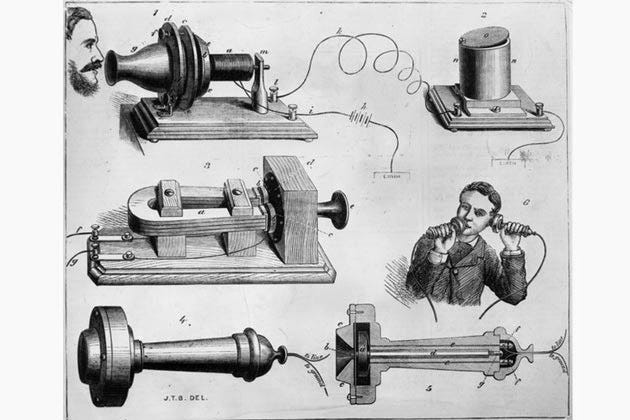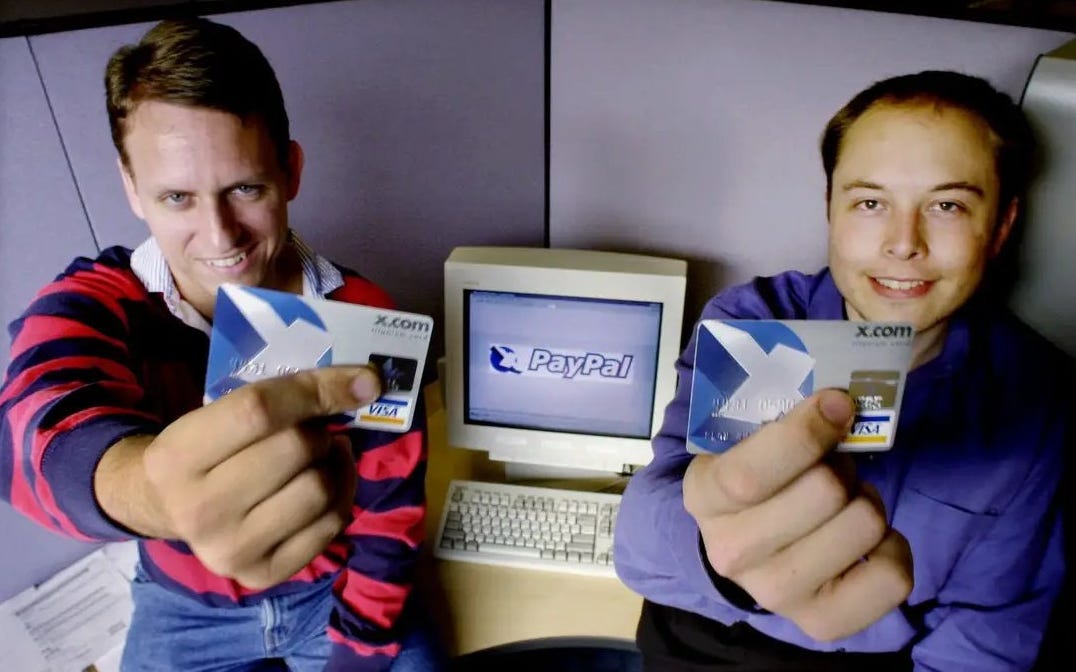Web 3.0 - The Next Phase of The Internet
Why disruptive technologies start out looking like toys and the potential of decentralised networks.
In the past few weeks, I have fallen deep into the Web 3.0 rabbit hole. During this time, I have read a lot from A16z’s Chris Dixon and I think two quotes of his are important to understand Web 3.0’s and decentralised networks’ current state.
“The next big thing will start out looking like a toy”, 2010
“What the smartest people do on the weekend is what everyone else will do during the week in ten years”, 2013
Before continuing with this newsletter I would recommend reading:
Is Disruption Dead? to understand how centralised platforms affect the internet.
Why Decentralisation Matters to understand why decentralisation is a misunderstood concept.
Don’t Fight The Fang to understand how aggregators work.
Why Disruptive Technologies Look Like Toys
Often disruptive technologies are at first dismissed since the full extent of their use case is not clear. For instance, the first telephone could only carry calls a couple of miles and many dismissed its usefulness. However, these people failed to anticipate the rapid improvement in telephone technology and infrastructure that would enable calls to reach anyone globally.
Another example is broadband. In a 2003 survey of U.S. broadband demand, surprisingly few were interested in adopting the new technology. At the time “broadband apps” like YouTube, Skype, and Discord hadn’t been invented. The interest in broadband started accelerating first when these apps started popping up.
This is called “complementary network effects”. Broadband and “broadband apps” are complementary goods and make each other more valuable. This is a reason why technology adoption is often non-linear - disruptive technologies need time to mature. It’s a process, not a product, that gets exponentially better over time.
Web 3.0 in its current state is a proof-of-concept where developers are working out how to use the tools given to them by decentralised networks to build thriving ecosystems. However, let’s not forget that many breakthrough technologies (PC’s, the web, blogs, most open-source software etc.) started as hobby projects. When it comes to future technologies, business people vote with their dollars, engineers votes with their time.
Web 1.0 vs Web 2.0
Web 1.0 was decentralised and built on open protocols: HTTP for websites, SMTP for email, SMS for messaging and FTP for file transfers. People could build on top of these protocols knowing that they wouldn’t be changed in the future.
However, Web 1.0 had its flaws: It couldn’t capture data and tailor user experiences, it was too technical, there were too few protocols meaning that a lot of powerful features of today’s internet was not accessible, and there was little possibility to make money off of protocols.
This was when Web 2.0 entered the game. It could capture the value that Web 1.0 could not by making it so anyone could participate and build on the web, translating hard to use protocols into user-friendly products.
However, with great power comes great responsibility. Web 2.0 companies don’t just capture data, they aggregate it, while also having the power to choose who has access to their platform.
In “Is Disruption Dead?”, I ask how you disrupt a product or service that serves each additional user at a near-zero marginal cost, becomes better for every user served, and serves them all equally well. It seems like an impossible task.
Nothing Tastes Better Than Free
PayPal paid new users to join when they were just getting started. This might seem like the typical, reckless Silicon Valley tactic of attracting users at any cost. However, acquiring users is never free and PayPal’s method was both cheaper and more effective at attracting and retaining users than traditional marketing channels. By paying people to use a product, people are more inclined to start using it - who turns down free money?
What if you take that method one step further, not only paying people to join the platform but paying them to use it and giving them access to the monetary upside of the platform.
In theory, that would make it possible to disrupt even aggregator’s (often) free products.
Web 3.0 - Internet’s Next Phase
This is what Web 3.0 is attempting to do. By cutting out the middleman (aggregators), Web 3.0 provides an incentive for users to grow projects allowing for entirely new business models and value chains to spawn.
A network effect is a phenomenon where user value increases for each additional user that joins the platform. Because Web 3.0 protocols have reward mechanisms built-in, it adds an additional layer of user value that Web 2.0 platforms do not. This creates an extremely robust network effect and (most likely) stronger flywheels.
Web 3.0 merges the ideas of Web 1.0 with the value capture of Web 2.0. Strong commitments, maintained by the community, means that centralisation is redundant and allows creators, builders, users and owners to capture the value that currently goes to the aggregators.
An interesting aspect of decentralised networks that few emphasize is that they are similar to APIs in the way they work. Blockchains provide the rails (security, transactions, scalability etc.) that allow engineers to build huge but lean projects while also being able to integrate with other projects for additional functionalities. This allows new projects to focus solely on what they do best while outsourcing everything else to other protocols - an API economy on steroids.
Today, Web 3.0 projects can in no way match Web 2.0 platforms on usability, performance or cost. However, as I outlined in Why Decentralisation Matters, Web 3.0 needs to go through a two-phase product-market fit: The first phase is between the platform and the developers who build out the ecosystem, and the second phase is between the ecosystem and the end-users. This two-stage process is why decentralised platforms’ potential is consistently underestimated.
Web 3.0 is misunderstood
I think Web 3.0 and decentralised networks are very misunderstood. Most are not trying to build an “alternative to fiat money”, but rather an alternative to today’s centralised internet networks, allowing for new business models and value chains to spawn.
To properly understand the possibilities of decentralised networks, ignore the price action fueled by speculation, and focus on understanding how decentralisation can increase value creation (and capture) for users, builders, and creators in the future.
In its current state, Web 3.0 looks like a toy, but many of the world’s best minds are currently devoted to understanding and building decentralised networks and the future of the web.
Did you enjoy this newsletter? Please subscribe if you haven’t already!








Great post